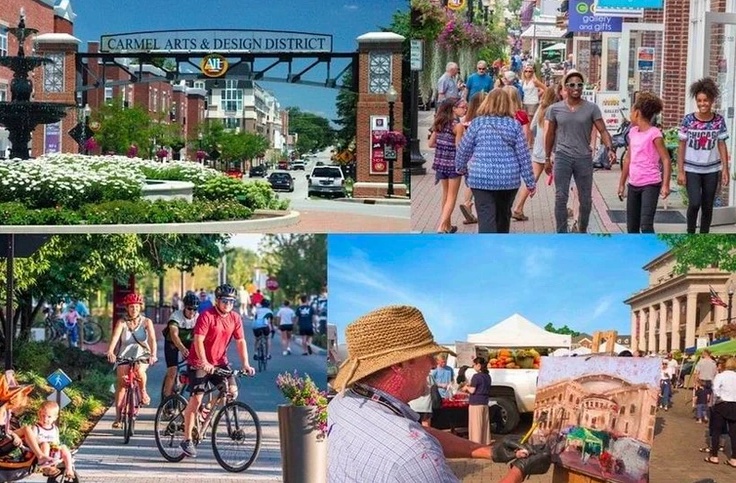And celebrate the life and legacy of Suzanne Lennard, co-editor of this blog, and the founder of the IMCL. Join us to help share the tools and strategies necessary to change the “operating systems for growth,” in the livability laboratory of Carmel, Indiana, June 8-12

CARMEL, MAY 31 – It’s now just over one week to go to the 57th International Making Cities Livable conference, and the program is jam-packed with expertise on transforming declining, automobile-dominated cities, towns and suburbs into walkable, mixed, diverse places that promote health, equity, and economic opportunity for all.
Carmel not only offers us many important and detailed case[study lessons in its own right, the Mayor and his staff are also our gracious hosts and partners — and we could not be in a more livable, beautiful, welcoming place. This will be a joyous event!
The International Making Cities Livable (IMCL) conference series was founded in 1985 by the late Dr. Henry L. Lennard, a Viennese medical sociologist, and the late Dr Suzanne C. Lennard, an English architectural scholar. The Lennards were passionate about sharing the best evidence-based lessons of great cities and towns to improve the quality of life for all. To do it, they brought together many of the world’s most innovative and successful mayors, planners, economic development specialists, designers, developers, NGO officials, and researchers and scholars.
The mission of the IMCL has always been to raise awareness, through conferences and publications, of the effects of urban planning on livability, health and social well-being. Conferences have been held annually in the United States and Europe. They are unique in enabling city officials, architects, planners, developers, community leaders, behavioral and public health scientists, artists and others responsible for the livability of their cities to exchange experiences, ideas and expertise. The varied perspectives provide deeper understanding of the issues and generate creative solutions.
The IMCL mission statement is very simple:
“Our purpose is to improve social and physical health, enhance well-being, strengthen community resilience, and increase equity and civic participation, by sharing effective tools for reshaping the built environments of our cities, suburbs and towns.“
The IMCL conferences have focused special attention on the importance of making cities livable for children and the aged first, the need for public transit, bicycle lanes, and traffic calmed streets, for human scale architecture and mixed use urban fabric, for reviving the city center and creating public places where people could gather for farmers markets, festivals, outdoor cafes and community social and economic life, for ALL citizens.
As we emerge from the pandemic, there are many important lessons to assess. The pandemic has revealed the nature of our urban challenges, many of them daunting — but it has also opened up new possibilities. Please join us for this important discussion, as we celebrate the life and legacy of Suzanne and Henry, and as we inaugurate the next chapter of “The Suzanne C. and Henry L. Lennard Institute for Livable Cities,” a US 501(c)(3) non-profit.
For more information or to register, visit https://www.livable-cities.org/.
